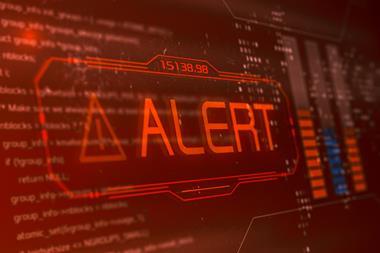When considering a reputation crisis, it is easy to assume that the onset will be sudden and dramatic and will immediately strike with full force. While a crisis may indeed suddenly flare up, it will often have been developing almost unnoticed for some time. If you can spot the crisis before it reaches the tipping point it can give you some big advantages, one of which is its still relatively small size. It is like dealing with a minor fire, compared to extinguishing a well-established conflagration.
Dealing with a reputation crisis is almost always about containing damage, and even a well-handled crisis can leave you that much more vulnerable to the next one. Reputation crises should therefore be avoided at all costs, and a proactive approach can defuse many of them before they explode in your face.
The nature of the challenge
A creeping reputation crisis can sneak up on you unnoticed in one of several ways. These include the following:
INTERNAL
- A flow of publicly-aired complaints about the quality of your product or service, or the sales techniques used in your name, gradually erodes the public's trust in you. Eventually things reach the tipping point, at which the individual complaints are perceived to be evidence of an underlying incompetence, arrogance or dishonesty.
- A single event that begins innocuously enough, escalates over a period into a major crisis. Opportunities to nip it in the bud are overlooked, and then, even if the crisis has been noticed in its early stages, it is ignored as it gets more serious. The reason for this is that many people stick to their initial judgement that it is insignificant, or that there is no cause for corporate blame.
Failure to spot the potential of such incidents early enough means that they may well be handled by employees who:
- Are not trained and motivated to protect your reputation
- Are judged by the minimum number of seconds they spend on each phone call
- Are strait-jacketed by procedures that may do nothing but exacerbate the situation
- Believe that they are dealing with one or two isolated complaints, unaware that colleagues are also dealing with similar ones, and that cumulatively, there is a pattern that indicates a much more serious problem than is immediately apparent.
If you outsource a part of your activities - for example overseas manufacturing or customer relations - the people handling what could become a major threat to your global reputation will be employed by a company with a totally different culture and values. Indeed, they may well perceive that it is in their best interest to keep the problem from you.
EXTERNAL
- Something that you are doing becomes increasingly offensive to some people. Initially their views may be in the minority, but they gradually gain popular support, and may be rapidly brought to prominence if their cause is taken up by a sector of the media, a celebrity, or a mainstream NGO, or if something propels it onto the front page. Your non-involvement in the early stages will deny you the opportunity to engage with the issue, and may result in your appearing uncaring or arrogant.
- An allegation is made by the local press about one of your companies or activities. The feature may not be spotted, and and even if it is, it may not be reported back. However, if the allegation is taken up by the international press, it could be very serious. Under those circumstances, if the first the centre knows of it is an accusatory call from a reporter asking for a comment before a publication deadline, you have no information with which to respond. In a large, diverse organisation it could take days or weeks before you can confirm or deny it. Meanwhile, repeated 'no comment' statements or, worse, knee-jerk denials, could do you massive harm.
TARNISHED BY ASSOCIATION
- This is the crisis that happens to another organisation in circumstances where you run the risk of being confused with them. Because you provide a similar product or service, you are assumed to have similar weaknesses, or to have done similar things.
The only way of avoiding being tarnished by association is to be able to differentiate your organisation, brand or product, and get that message out quickly and authoritatively. Of course, this can only work if the differentiation is genuine, not just something put together by your marketing department or your lawyers as a quick fix.
Often the window of opportunity for you to make your differentiation is very small - while the story is still hot, while opinions are still being formed. Therefore the processes described below will be vital.
The reputation risk profile
Creating a reputation risk management profile for your organisation can help you spot those issues that might escalate into a crisis. It is simply not possible to monitor every last thing that might contain the seeds of a crisis, but, fortunately, less than 1% of the organisation's activities are likely to contain more than 99% of the potential for crisis. The key is therefore where to look for the 1%.
An integral part of the reputation risk management process is to identify the range of scenarios that are most likely to cause a crisis. That knowledge can then be used both to shape and test your preparedness and also to focus your radar.
Spotting the 1% requires a combination of:
1. INTERNAL KNOWLEDGE - what do we do that could backfire and cause a crisis?
2. EXTERNAL EXPERIENCE - what issues, errors and crises have hit other organisations, that we might also be vulnerable to?
3. EXTERNAL KNOWLEDGE - in areas that are relevant to us, what issues are being researched, contested, lobbied or publicised? Which NGOs are involved and how active, credible and powerful are they?
4. STAKEHOLDER KNOWLEDGE - what are our key stakeholder groups and what are their sensitivities and expectations of us?
5. OPEN, HONEST THINKING - can we discuss things without going into denial or fearing breaking taboos? Can we accept that things really could go wrong and that we just might make mistakes?
6. IMAGINATION AND LATERAL THINKING - do we have these qualities, which are vital in a rapidly changing world?
An external facilitator can add great value to this evaluation process.
In the author's experience it is very rare for any organisation to be able to do it from internal resources alone - not only because of lack of the necessary external knowledge, but also because corporate politics and taboo areas will allow critical assumptions to go unchallenged.
Of course organisations change and the outside world usually changes even faster, so this process has to be refreshed and repeated as necessary.
One of the outcomes at this stage should be to consider, at board level if necessary, whether any of the activities identified as being potentially harmful to your reputation or to stakeholder relationships should be discontinued or modified. Reputation risk management is not just about dealing with an issue that goes wrong; it is about creating the optimum balance between proactive and reactive measures, and between commercial and ethical imperatives.
In the words of Kevin Roberts, worldwide CEO of Saatchi and Saatchi, 'You cannot hide behind a brand name or logo. If you have sweatshops in Asia, if you don't have a sound environmental policy, if you are not socially and morally friendly, the consumer will punish you by not buying you.
And that is because I can buy a perfectly suitable alternative, because I don't believe in you - I don't trust you.' Using slightly different words, similar sentiments could be applied to business-to-business and to the public sector.
The reputation risk strategy
The various stages of the process in the overall context of creating a reputation risk management strategy, are shown in figure 1.
Monitoring the issue
Having spotted an issue that could escalate, you need to be able to:
1. EXPAND YOUR KNOWLEDGE OF IT - through internal enquiry, internal investigation and/or heightened use of news searches and business intelligence as appropriate,
2. CONTEXTUALISE IT - what local politics and issues in the country in question, and what other events and developments, might affect it? Many a multinational organisation has tried, to their cost, to handle a crisis from head office, or with a team from head office, without having access to this vital local knowledge
3. ANALYSE IT - where does the issue sit in the context of other relevant internal and external developments - including your own forward planning? How are your key stakeholders and other audiences likely to react to this issue if it develops?
4. ESCALATE YOUR INTERNAL RESPONSE AT THE RIGHT TIME - declaring a crisis too often will rapidly cause the process to lose credibility. Avoid this by pre-defining the points at which the issue should receive increasing attention, and give the responsibility for key decisions (for example to pull in a full crisis team) to someone with the appropriate skills, judgement and training. There are simple assessment processes that can be used by those making a severity judgement.
All of these stages will require it to be accepted that your organisation could actually have done something wrong, and that pro-activity may be required.
A key part of the process is to understand how an issue that starts off in the domain of a minor player, such as a local pressure group or local newspaper, can escalate into the hands of the national or international media or a global pressure group, and how the process of escalation can bring in other parties. For example, the media may take up an issue that a pressure group is campaigning on, or vice-versa, and thereafter other parties, such as politicians, regulators or other pressure groups can also become involved.
Armed with the knowledge called for in stages one to three above, together with an understanding of how reputation crises typically unfold, the likely progression of the crisis can be modelled at an early stage. This will enable its course and impact to be predicted. As a result, you can both fine-tune your response strategy and further refine the focus of your monitoring and information gathering.
Reacting to an issue
Your prompt actions will only be worthwhile if you handle the issue properly once you intervene. Failure to do so can be counterproductive. Immediate options will include changing your behaviour, entering into a dialogue, investigating and closely monitoring.
Unless you have checked, double checked and triple checked, and are so confident that the whole board as well as your legal advisers are prepared to resign en masse if you are wrong (a wonderful way of concentrating the mind and ensuring that issues will be thoroughly investigated before anyone opens their mouth on the subject), no one should categorically deny responsibility, involvement or blame. Doing so, and subsequently being found out, can do a hundred times more damage than if you had made a suitable holding response while urgently seeking the truth.
David Davies is managing director of DBRC which specialises in the risks relating to intangible assets and high level business risk strategy, and in helping organisations to achieve crisis preparedness, Tel: 01635 865271, 07876 684778 (m), E-mail: ddavies@dbrc.co.uk He leads the reputation and contingency planning team of idRisk, a network of risk professionals, Tel: 0845 22 55 606, www.idrisk.com



















